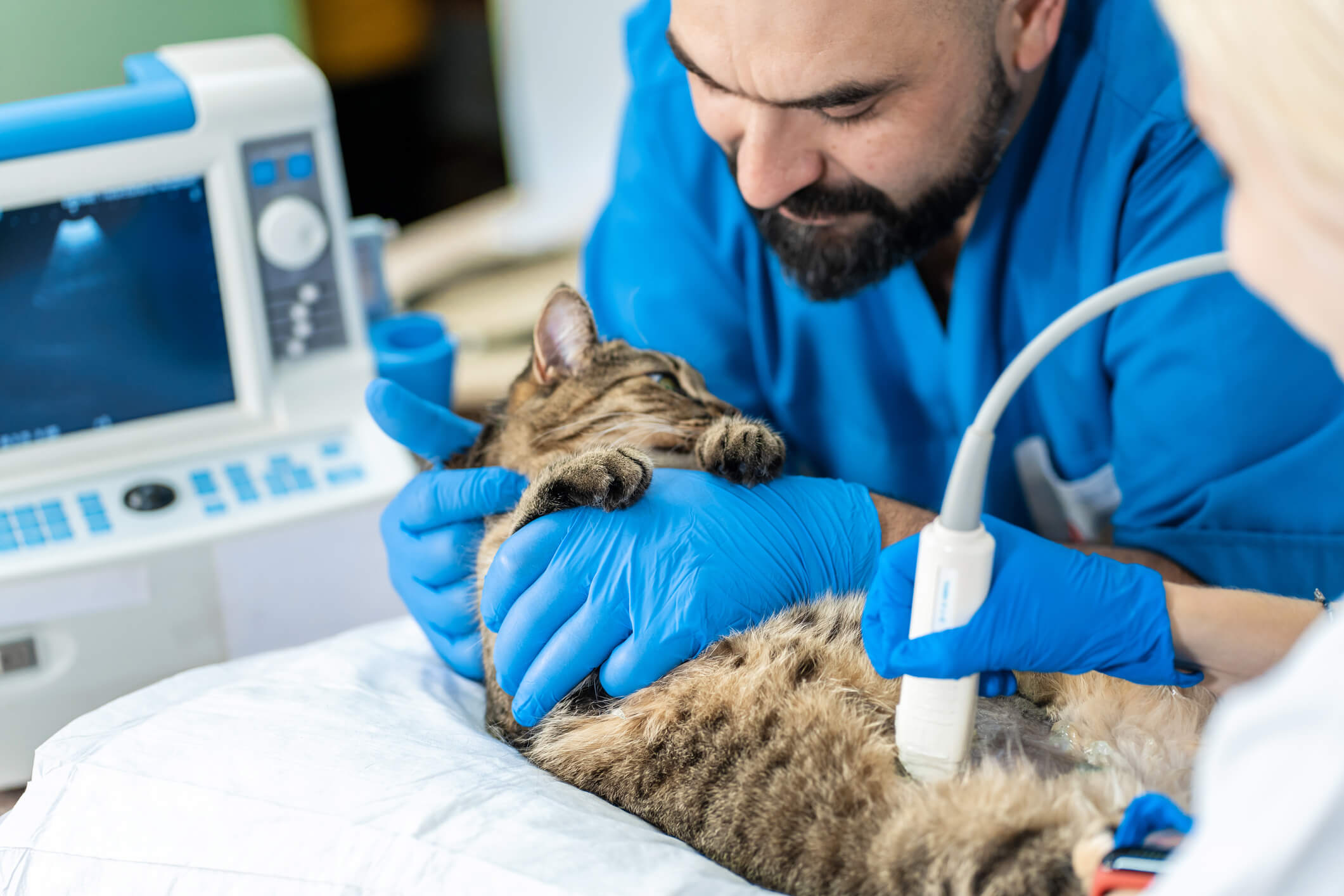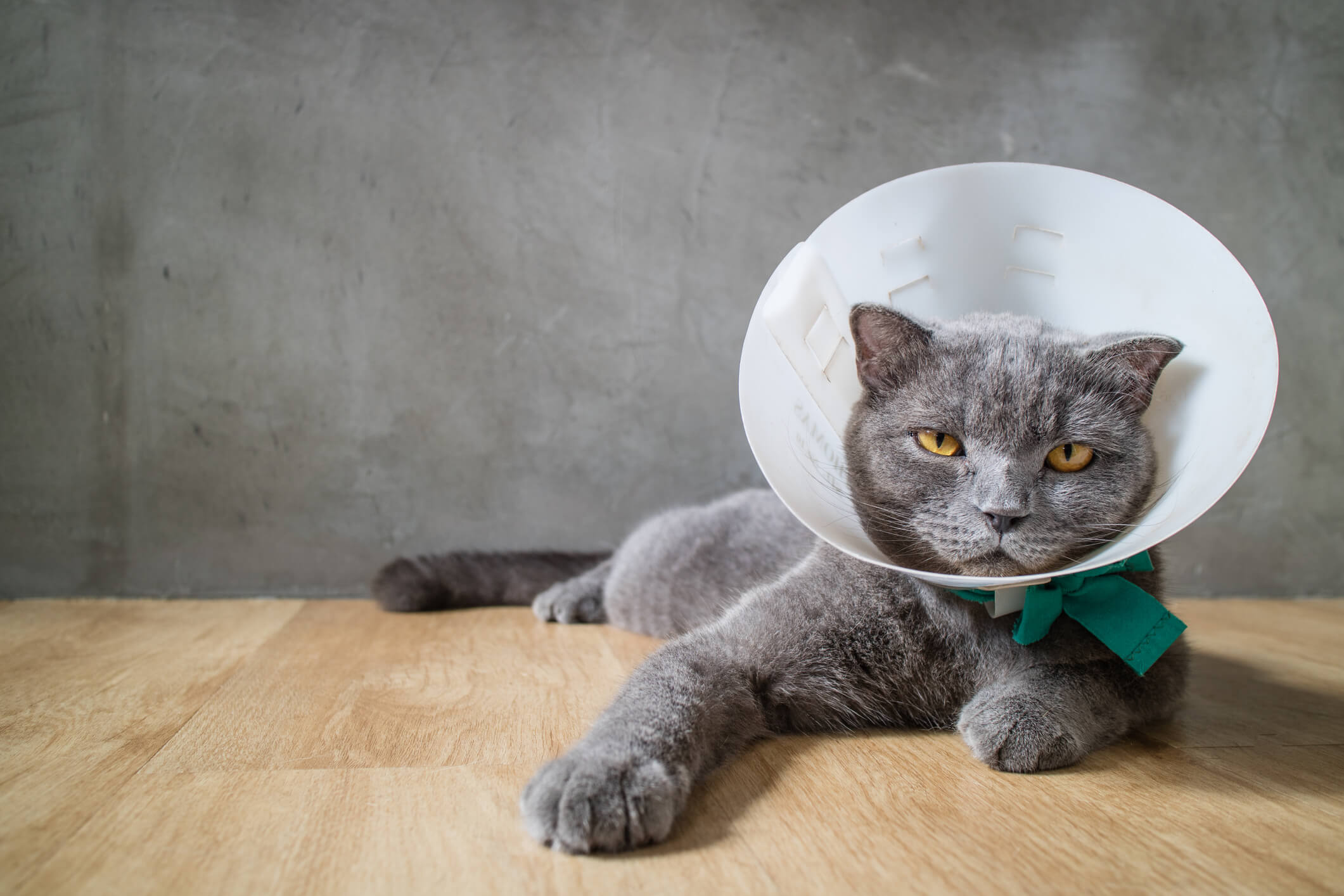
When Would a Cat Need Urethra Surgery?
Pet parents often want to avoid putting their furry friends through surgery as long as possible. However, in some cases, the threat to the pet’s life is so severe that surgery is unavoidable. This is often the case with male cats requiring a perineal urethrostomy surgery.
Neutered male cats are highly susceptible to a dangerous condition called a urinary blockage. Because male cats have narrow urethras, types of buildup like crystals or mucus can accumulate as they exit the body, causing a partial or complete blockage. Blockages might also be caused by inflammation due to stress or feline idiopathic cystitis. If this happens, urine is not able to exit your cat’s body, putting their life at risk. Cats who go as little as 24 hours without emptying their bladder may succumb to kidney damage, bladder rupture or, sadly, death.
Urinary blockages can usually be treated by a veterinarian by inserting a urinary catheter and flushing the cat’s system to remove stones, crystals, mucus and other sediment. Unfortunately, this does not solve the underlying combination of problems that cause male cats to block. Once a cat experiences one urinary blockage, they have a higher risk of developing another—sometimes after as little as a few days!
Urinary blockages can be extremely stressful for your cat, their body and you. Blockages are life-threatening and very scary once, let alone multiple times. In these situations, some vets recommend that the cat undergo what’s known as a perineal urethrostomy surgery.

What is a perineal urethrostomy?
A perineal urethrostomy (also known as a PU surgery) involves surgically altering a cat’s urethra to make a wider opening for them to urinate out of. In male cats, this typically involves removing the penis, which is where the urethra is the narrowest, and creating an opening that more closely resembles a female cat’s using a part of the urethra that is wider.
PU surgeries have been conducted on many male cats over the past few decades and generally have a good success rate. They are invasive, however, so the cat will need to be sedated under general anesthesia and will be given stitches and pain medication to help them heal.
This new, wider opening allows sediment, crystals or mucus inside the bladder to exit the body more easily, effectively preventing most blockages. Using a wider section of the urethra also helps reduce the risk of inflammation-related blockages. Although the majority of cats go on to live happy, blockage-free lives, a PU surgery is not 100-percent effective against all blockages. Some cats may develop a blockage even after surgery.
The surgery also comes with a few risks, as most surgeries do. Complications may include urinary incontinence, urine leakage under the skin and narrowing of the surgical site as it heals. The most common complication is recurring urinary tract infections. This is because the urethra is much shorter, and bacteria have an easier time traveling to the bladder. Cats who undergo a PU surgery are recommended to have more frequent urine tests to treat underlying infections.
Which cats are eligible for a PU surgery?
If your cat develops a urinary blockage, it is unlikely that your vet will recommend a PU surgery right away. The surgery is typically performed as a last resort for cats that experience multiple blockages because of the risk of complications. Many vets operate under a “three strike” rule, meaning the cat must experience three blockages in spite of changes to their diet and lifestyle before the surgery is an option.
If your cat experiences a blockage that cannot be relieved with a traditional urinary catheter, an emergency PU surgery may be necessary to save their life.
Not all vets will perform the surgery, so it’s important to discuss the idea with your vet or emergency clinic and get a referral to a board-certified surgeon with experience in the procedure.

How to support your cat during recovery
If your cat does receive PU surgery, your vet will give you detailed instructions on how to care for them during the two- to four-week recovery period. Most importantly, you should not remove your cat’s Elizabethan collar for at least two weeks. If your cat begins to groom near their incision, they could cause damage that leads to scar tissue and a too-narrow opening.
A few lifestyle changes are also good choices for cats following PU surgery:
- Encourage extra water: It’s good for cats with urinary problems to drink lots of water each day. This encourages them to pee more frequently, so crystals don’t have the opportunity to form in the bladder.
- Probiotics: Many vets will administer antibiotics to cats who experience a urinary blockage and/or PU surgery to alleviate any urinary tract or bladder infections. Unfortunately, this can cause stomach problems for cats after surgery. Probiotics can stabilize their gut flora for a faster recovery and prevent diarrhea.
- Good urinary health: Because cats who’ve had a PU surgery are more susceptible to urinary tract infections, it’s a good idea to pay close attention to their urinary health. Urinary support supplements can help prevent infections, low stress can reduce inflammation of the bladder, and a clean litter box encourages frequent use and reduces bacteria that could cause an infection.
For many parents of frequently blocked cats, the choice to do the PU surgery is simple. It’s an often successful procedure that can save the life of a cat experiencing recurring urinary problems. However, it’s critical that owners consider the risks and take care to rehabilitate their pet post-surgery to ensure the best outcome.


